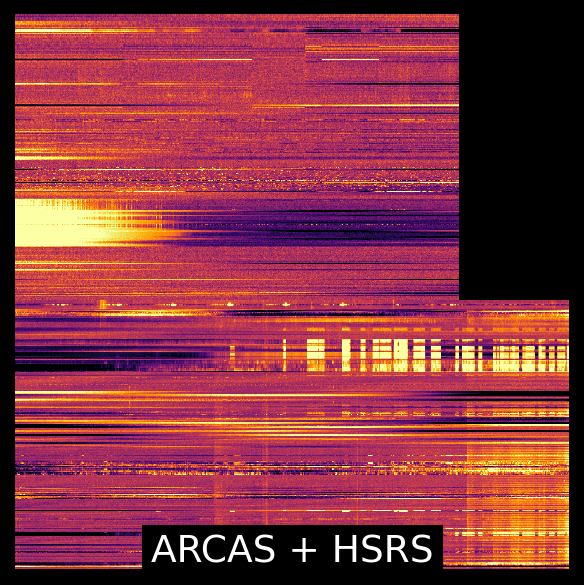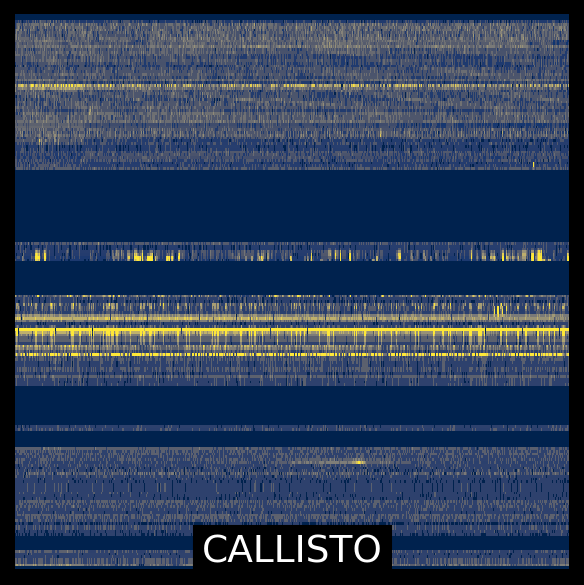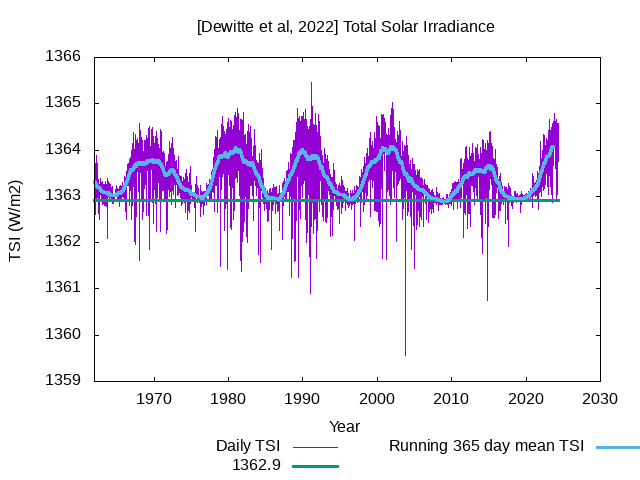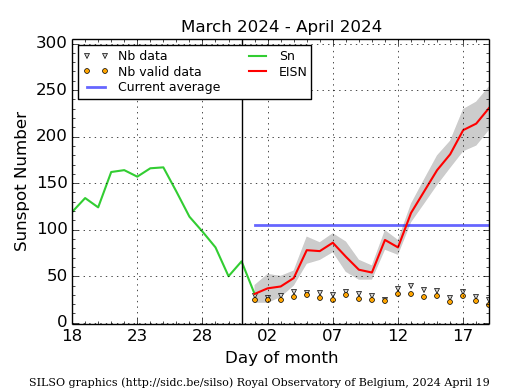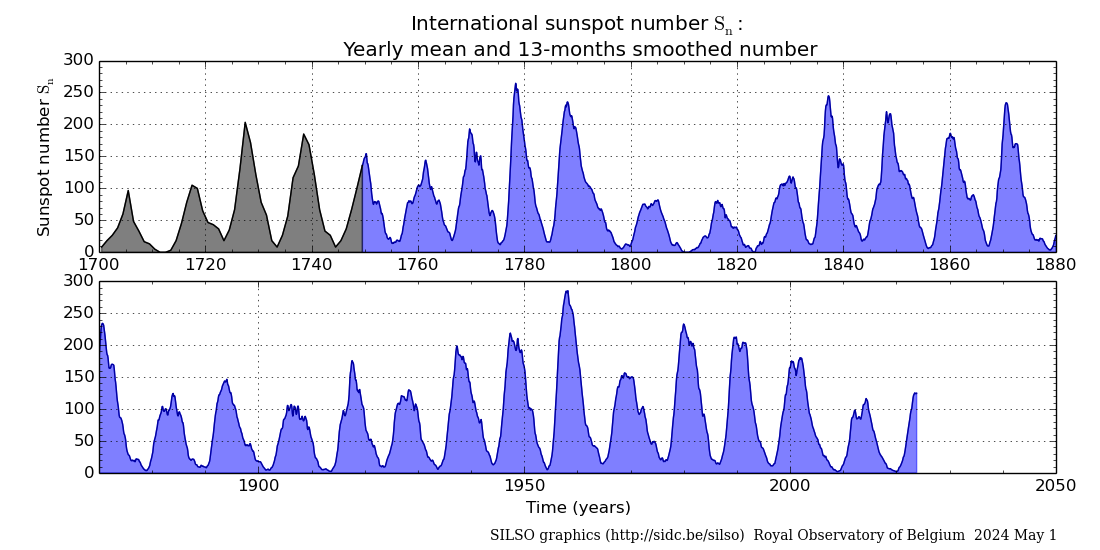Solar flaring activity over the past 24 hours was at high levels. The largest flare was a X1.7-flare, with peak time 02:22 UTC on May 03 associated with NOAA AR 3663 (beta-gamma-delta). There are currently 6 numbered active regions on the visible disk. NOAA AR 3663 (beta-gamma-delta) and NOAA AR 3664 (beta-gamma-delta) are the most magnetically complex regions on disk and produced most of the flaring activity in the last 24 hours. A new yet unnumbered active region has started to emerge on the north-east quadrant of the visible solar disk. All other regions were inactive and stable. The solar flaring activity is likely to be at moderate levels over the coming days with C-class flares expected and M-class flares probable and small chance for an isolated X-class flare.
A Coronal Mass Ejection (CME), was seen at 12:01 UTC on May 02, in LASCO C2 data. This CME is associated with NOAA AR 3654. Further analysis is ongoing. Another CME, was seen at 03:01 UTC on May 03. This CME is associated with NOAA AR 3663 and the X1.7-flare, with peak time 02:22 UTC on May 03. No impact at Earth is expected from this CME.
An equatorial positive polarity coronal hole is crossing the central meridian. A high-speed stream from this coronal hole may impact the Earth on May 08.
Over the past 24 hours the greater than 10 MeV GOES proton flux was at background levels and is expected to remain so over the next days.
The greater than 2 MeV electron flux measured by GOES 16 and GOES 18 was below the 1000 pfu threshold and is expected to remain so in the upcoming days. The 24h electron fluence was at nominal level and is expected to remain so in the next days.

